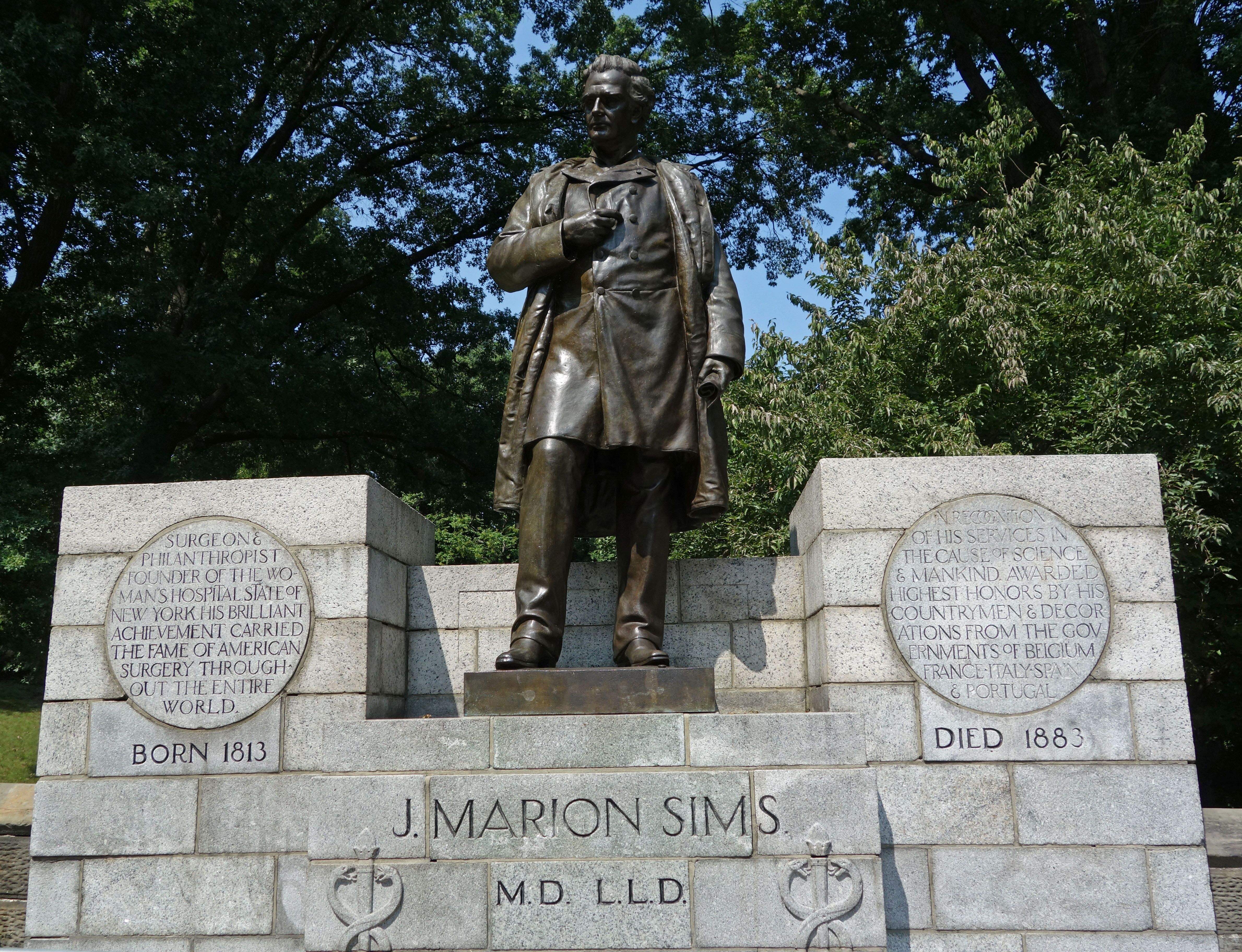
In a statement yesterday, the Museum of the City of New York (MCNY) took a stand: It is now advocating for the removal of a much-protested statue of 19th-century physician J. Marion Sims, located in East Harlem on 103 Street and Fifth Avenue in New York City.
The letter comes hard on the heels of New York City Council speaker Melissa Mark-Viverito’s announcement this past Monday that the statue should be removed (Mark-Viverito is councilwoman for district 8, which includes East Harlem and the South Bronx).
The MCNY’s statement also follows Mayor de Blasio’s decision last week to conduct a 90-day review of all “symbols of hate on city property” following the violence that occurred during a white supremacist rally protesting the removal of a Confederate statue of Robert E. Lee in Charlottesville, Virginia.
The Sims statue, which sits just a stone’s throw away from the MCNY across Fifth Avenue, represents James Marion Sims (1813–1883), regarded as the father of gynecology. His legacy, however, rests on his grossly unethical medical practices, performing countless experimental surgeries between 1845 to 1849 on black female slaves without their consent.
As Harriet Washington vividly recounts in her book Medical Apartheid: The Dark History of Medical Experimentation on Black Americans from Colonial Times to the Present (Doubleday, 2007), “Each naked, unanesthetized slave woman had to be forcibly restrained by other physicians through her shrieks of agony as Sims determinedly sliced, then sutured her genitalia.”
For many residents of East Harlem, the Sims statue has served for years as a reminder of the atrocities of slavery and the legacy of violence against women of color. And while the MCNY’s call to bring down the statue is a big win for the community, it should be noted that activists and artists alike have been asking for its removal long before the current monuments protests, often without support from government officials or cultural institutions.
For example, East Harlem Preservation (EHP), an organization founded by activist Marina Ortiz in 2005 “to promote and preserve the neighborhood’s history and diversity,” has since 2007 been advocating for the removal of the Sims monument. Despite the support from Mark-Viverito and Community Board in 2011, the Parks Department refused the request on the basis that “the city does not remove art for content.”
For a decade, protests and demonstrations speaking out against Sims and his statue have have been regular, especially in recent years. Artist Simone Leigh also spoke out against the statue at the Creative Time Summit in 2015. In 2016, a collaboration between EHP and the art activist group Laundromat Project (which this writer helped organize) protested the sculpture.
Just this past weekend, a performance by activist group Black Youth Project 100 attracted widespread media attention.
J. Marion Sims, “father of modern gynecology”, memorialized for performing genital surgery on Black woman slaves w/o anesthesia or consent pic.twitter.com/p5hE8S7uCv
— BYP100 (@BYP_100) August 19, 2017
All this led up to the new statement from the MCNY, which has in the past has been reluctant to support the removal of the controversial monument.
On Facebook, EHP made reference to this history: “@MuseumofCityNY ignored our request for a letter of support for the removal of the Sims statue, but now agrees. Welcome aboard. It’s never too late to get off the fence.”
Below is the full statement by the Museum of the City of New York:
The Museum of the City of New York praises Mayor de Blasio for initiating a 90-day review of ‘symbols of hate on New York City property’ and we join the East Harlem community in asking that the statue of Dr. J. Marion Sims be included in this review. We are in agreement with City Council Speaker Mark-Viverito, our local elected officials, Community Board 11, and other members of our community that there is a compelling argument to be made for the statue’s removal as a symbol of unethical racist medical practice. The Museum of the City of New York supports the removal of the statue on this basis.